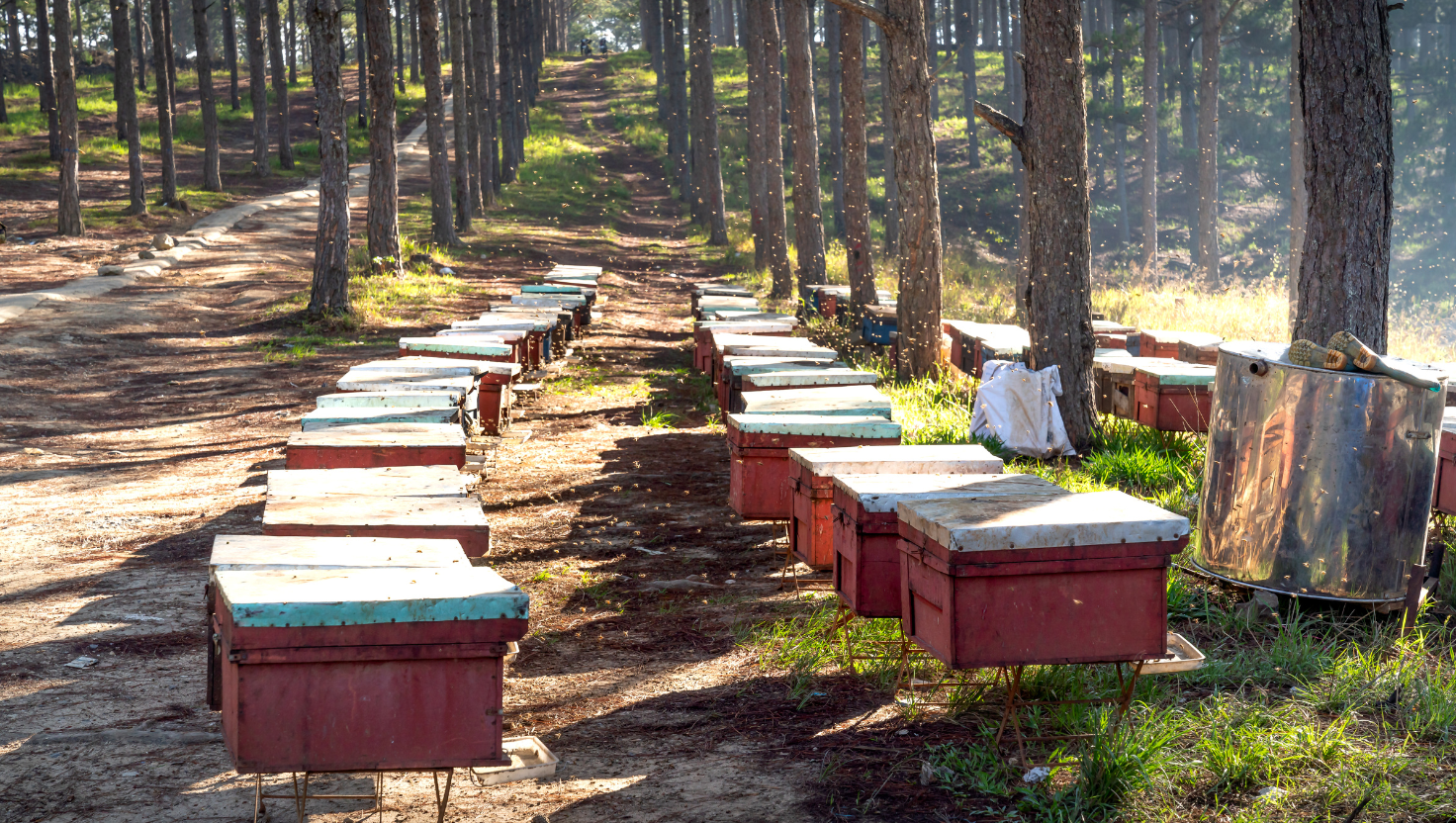The Role of Forests in Food Security and Nutrition in Africa
Forests are often underestimated as essential components of food security and nutrition. This year, International Day of Forests, 21 March 2025 focuses on forests as a source of food. These ecosystems are instrumental in supporting the continent's food systems, offering a diverse array of edible products, and significantly contributing to the livelihoods of millions. According to the FAO, more than 5 billion people use forests and non-forest timber products for food, medicines, and livelihoods. 1
African forests harbour many edible plants and animals, including fruits, nuts, seeds, leaves, and insects. These forest foods are abundant in essential nutrients, comprising protein, fibre, vitamins, and minerals. Notable examples include:
1. Forests yield various fruits such as bush mangoes, African plums, and berries, which are rich in vitamins A and C, potassium, and fibre.
2. Nutritious options such as shea nuts, palm nuts, and sesame seeds can also be found in forest environments.
3. Forests also provide a selection of leafy greens, including bitter leaves, pumpkin leaves, and spinach, which are rich in iron, calcium, and vitamins A and K, as well as a variety of wild mushrooms.
4. Edible insects, such as grasshoppers, crickets, and mealworms, are found in forests and are high in protein and micronutrients.

Contribution to Food Security and Nutrition
In January 2025, the African Union adopted its agricultural development strategy with the promise to drive the continent to increase its agrifood output by 45 per cent by 2035. It equally came outline the ambition to transform Africa’s agri-food systems to get the continent to full food security in a decade. Forests are the continent’s best bet to rich this ambitious target to enhance food security and nutrition in Africa. 2 Here is how African forests can help:
- Food Availability: Forests serve as a reliable food source, particularly during periods of scarcity or when alternative food sources are inaccessible.
- Income Generation: Forest-based livelihoods, including the harvesting of fruits and nuts, create income opportunities for local communities, enabling them to acquire other essential food items.
- Nutritional Diversity: Forest foods contribute to dietary diversity, ensuring that populations can access a wide range of healthy and essential nutrients.
- Cultural Significance: Forest foods hold deep cultural and traditional importance for communities, fostering a sense of identity and belonging.
Some Examples from Across Africa
Here are just a few examples of ingredient and forest foodstuff that are found in our forests in Africa.
- The shea tree, native to the savannas of West Africa, produces shea butter, which is widely utilized in culinary and cosmetic applications.
- Bush mangoes are integral to the diets of numerous communities in Central Africa, providing vital vitamins and minerals.
- In regions of East Africa, insects such as grasshoppers and crickets are harvested, serving as a substantial high-protein food resource.
- The marula fruit, found within the natural forests of Southern Africa, is rich in vitamin C and is utilized in the production of various products, including juice, oil and famous Marula-based liqueurs.
- A range of edible mushrooms are also found on the East Coast of South Africa in some of the commercial plantations. South African forests are home to a diverse array of mushrooms, including edible species like Bay bolete, Porcini, and Amakhowe, as well as poisonous ones like the Death Cap mushroom.

- South African forests, particularly Eucalyptus plantations particularly in the provinces of KwaZulu-Natal, Mpumalanga and Limpopo are rich in honey sources, with trees like Waterberry and Bosvlier contributing to the unique flavours of local honey. Beekeeping is a sustainable practice in these areas and provides a source of income to rural populations.

Challenges and Opportunities
Despite the critical role forests play in advancing food security and nutrition, they face several significant challenges:
Deforestation, land degradation, and the conversion of forests for agricultural, urban, and other uses diminish the availability of forest foods and livelihood opportunities.
Rising temperatures and altered rainfall patterns, i.e., climate change, adversely affect the productivity and biodiversity of forest ecosystems, jeopardizing food security and nutrition.
Unsustainable harvesting practices, i.e., over-harvesting of forest products including fruits and nuts, can deplete these vital resources and threaten local livelihoods.
To address these challenges, several opportunities are available:
- Promote Sustainable Forest Management: Encourage practices that harmonise forest conservation with sustainable utilisation, ensuring the sustained availability of forest foods and associated livelihoods. Certification has shown an improvement in the viability of forests to provide for these needs
- In addition to the Forest Stewardship Council®’s (FSC®) robust Forest Management Standards, FSC Ecosystem Services Procedure helps forest managers quantify the ecosystem benefits their forests provide, including carbon storage and species protection. This provides forest managers, companies, and investors with a tangible tool to act on the climate and biodiversity crises transparently, and support ecosystem protection and restoration.

- Support Forest-Based Livelihoods: Provide training, resources, and market access to local communities, empowering them to establish sustainable forest-based enterprises. The inclusion of smallholders into certification systems is evidence of this.
- Integrate Forest Foods into National Food Systems: Recognize the significance of forest foods within national food security and nutrition strategies and extend support for their conservation and sustainable management.
Certification that goes beyond timber
At the Forest Stewardship Council, we strive to make sure everything the forest has to offer is sourced in a way that is good for forests and people. That is why we’re constantly expanding our certification to cover an array of forest-based products like cork, nuts, rubber, honey and more. Many of these products, known as non-timber forest products (NTFPs), can be harvested responsibly, generating new sources of income. This means NTFPs can support the livelihoods of smallholders and communities while contributing to the sustainable management of the forests from which they originate. In Africa, standards developed like in Ethiopia, Cameroon and Ghana consider NTFPs such as bamboo, natural rubber and honey that are critical for Indigenous and Local Community Livelihoods.
Conclusion
Forests are indispensable in bolstering food security and nutrition across Africa. By advocating for sustainable forest management, supporting forest-based livelihoods, and incorporating forest foods into national food systems, stakeholders can ensure the long-term availability of these essential resources, contributing to a more food-secure and nutritious future for all.
Let us embrace the power of forests to inspire positive change and nourish our communities, ensuring that the wealth of nature continues to sustain generations to come.
- International Day of Forests 21 March | FAO | Food and Agriculture Organization of the United Nations
- The African Union adopts ten-year strategy and action plan to transform Africa's agri-food systems and ensure food security | African Union
